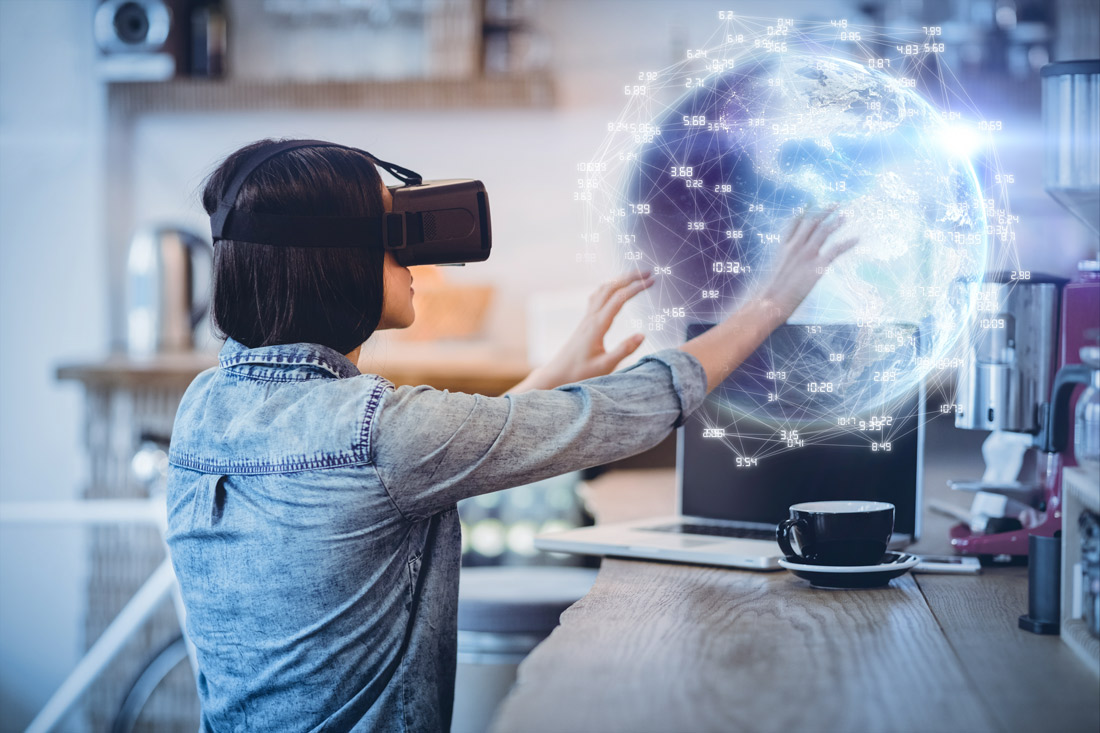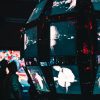|
Getting your Trinity Audio player ready...
|
Immersive tech, like VR, is one of the trends identified in Shutterstock’s 2017 Creative Trends Infographic. Discover more trends in global culture, design, music, video, and social media in Shutterstock’s annual report.
Chances are you heard about virtual reality a whole lot in 2016.
That’s largely because last year marked a breakthrough for the medium in several ways: The hardware (like Playstation VR, HTC Vive, and Oculus Rift) finally became accessible and affordable to everyday consumers; platforms like Steam and Transport began hosting growing catalogues of VR content and programs, and ambitions began extending past hype-friendly content towards revolutionizing everything from education to medicine.
But for all the progress the medium made, 2016 was still very much early days for VR. What the medium can and will do is still unknown, but in the year ahead one profession in particular promises to play a major role in shaping it: Designers.
Experimenting with VR Content
Hardware is always the first consideration in the VR space — you’re more likely to hear the words “Oculus” or “Samsung Gear VR” than the name of any short film or app. But like any medium, content matters. Those who believe in the possibility of VR aren’t converted by the tech, but by the content they’ve seen through the tech.
What makes something worthwhile in VR isn’t all that different from other media: It’s about exceptional design.
“[VR is] not just a blank canvas — it’s like the canvas hasn’t even been stretched yet. We’re really just trying to figure out the fundamentals,”
“[VR is] not just a blank canvas — it’s like the canvas hasn’t even been stretched yet. We’re really just trying to figure out the fundamentals,” says Oren Haskins, an illustrator who provided the character design for Pearl, an animated VR film from 2016 that puts you in the passenger seat with a musician and his daughter.
Pearl, like other notable VR projects from this past year, demonstrated the wide-open possibilities of that un-stretched canvas, whether you use it to tell a story about an adorable cartoon hedgehog (Henry) or a silent candy corn-shaped ghost (Light Spirit). These projects were successful not because of technology, but because of strong storytelling paired with compelling visual design.
Content Fills in for Flawed VR Hardware
The year ahead promises continued emphasis on well-designed content. While impressive design has made the technology more accessible to all audiences, it can also compensate for the notable flaws that plague these early iterations of VR.
Even the most devout VR cheerleaders will admit the current hardware has limitations – it’s bulky, hot, and the image quality tends to be fuzzy, evoking ancient viewfinders in museums. It may be some time before you can strap on a headset and see images comparable to playing the latest Call of Duty on your HD television. Instead, it’s more comparable to playing the first Call of Duty on a PC from 2003. “It’s a little like turning back the clock to hardware that’s a decade old,” says Pearl illustrator Haskins.

Therein lies an opportunity — even a need — for designers to become the heroes of VR; for their aesthetics to compensate for lacking tech. “It requires a really strong artistic direction in VR that doesn’t make you feel like you’re looking at something that is limited in any way,” Haskins says. That requirement will be a boon to enterprising designers in 2017 looking to apply their skills to the uncharted waters of virtual reality.
Experimenting with VR Design
Some 2017 projects on deck already show significant promise for exploring the possibilities of the medium. In Asteroids!, animated aliens navigate their spaceship through asteroid debris. In Hue, audiences follow a young man who has lost the ability to see color. As Hue’s creator described in a post on the Sundance Film Festival’s website, “narrative and art direction” were necessary tools to help forge emotional bonds to the subject matter. The watercolor style helped evoke the right emotion.
Meanwhile, the tools used to create VR content are evolving. Dear Angelica uses painterly strokes to depict a story of grief and memory — another VR design mechanism that will impact creatives in 2017. This particular VR experience was created with the Oculus program Quill, which is like a mid-point between Microsoft Paint and Adobe Photoshop that gives artists the unique experience of creating in three-dimensional VR space. It’s one of several programs that allow creatives to not just design for virtual reality, but with and in it. Oculus also released the sculpting program Medium, and Google has his own version of Quill called Tilt Brush.
“The first time I just painted one stroke in Tilt Brush, and then walked around it, I thought, ‘This is it. This is the thing.’ It was like being in a dream moment,” says artist Stuart Campbell. His Sutuwerld project, for example, highlights the vast aesthetic possibilities of the medium by featuring four entirely different worlds seen through window-like portals.
VR Tools and the Evolution of Design
2017 will undoubtedly lead to more creators and projects like Campbell and Sutuwerld as others begin to experiment and pursue what can be done.
“From a tool point of view, it’s going to be a very exciting year, just because so many discoveries are being made, and pushed out so quickly, that advancement seems to be happening really fast,” says Campbell.
Concept artist Alix Briskham, whose video of her using Tilt Brush to create a monster has more than 300,000 hits on YouTube, foresees rich possibilities for designers to use programs like Tilt Brush for 3D visualization of, say, characters and places in video games. She also believes it will find homes in non-artistic fields. “We might see more architectural-type programs,” she says. “I know it’s already being used in factory manufacturing, so you can see where all the machinery goes before you spend millions of [dollars] putting machinery in.”
In 2017, many of the advancements in VR tools will happen through collaboration between developers and the designers using the programs. “Everyone’s at a point where they’re very generous,” Campbell says. “Everyone’s caught up in the excitement of it, and wants to help, and share, and learn from each other.”
For example, the VR artist says he often corresponds with the Google Tilt Brush team to suggest additions and share what he’s doing in the program — and they listen. This open-door policy is a common trait of VR right now: Nobody fully knows what it can do, so everyone is figuring it out together. For designers who can afford the price of entry for VR, the chance to not only define design work in virtual reality, but to define the medium itself is unprecedented.
Key Takeaways
- Virtual reality is still in an experimental stage, but strong storytelling and visual design will define the medium.
- VR hardware is limited, but this presents an opportunity for designers to create content that compensates for it.
- VR design tools like Tilt Brush and Quill will enable creatives to create in virtual reality and write the rules of VR design.
- The future of VR design will be shaped collaboratively, between designers, industries, and hardware developers.
Published by Alexander Huls on Shutterstock blog.










